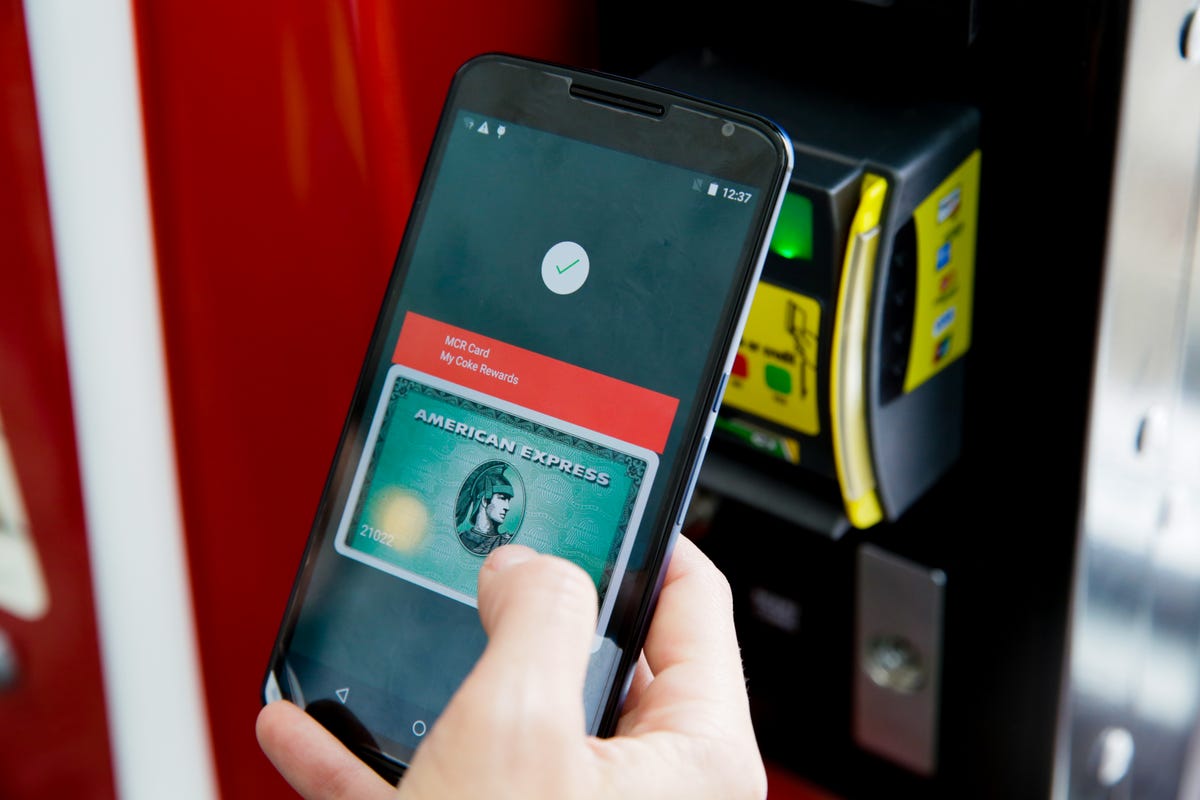
Google’s had a bumpy ride in the mobile payments world, but now it’s looking at a second chance. Android Pay is the new Google Wallet, and it’ll more convenient, secure and ubiquitous than ever. Here’s what you need to know.
A fingerprint scan isn’t required.
Fingerprint scanning is the most secure smartphone authentication method right now, but you won’t need it to use Android Pay — it’ll be at least a year until most Android phone makers integrate fingerprint scanners into their devices.
Until then, Android Pay accepts a PIN code, password, or pattern to authenticate a transaction. To make a purchase, you tap your phone on the payment terminal, enter your passcode, and the transaction is complete.
Tokenization keeps your money secure.
Anyone going into the payment space right now is expected to use something called tokenization. Tokenization makes it so that when you pay for something, the retailer receives a devalued, one-time-use credit card number instead of your real account number. This way, if there was a credit card data breach, your real card information remains secure.
Like Apple Pay, Google Wallet and chip-and-PIN cards, Android Pay uses tokenization. It’s not a surprise, but it is worth mentioning, especially since the competing smart credit cards coming to market don’t yet utilize this technology.
Related posts
- Google Wallet vs. Apple Pay
- Fingerprint scanners coming to Android
- Smart credit cards are coming. Here’s what you need to know
You can use it in dead zones.
Android Pay can only perform a limited number of transactions in dead zones.
To understand why, let’s back up and talk about Host Card Emulation, or “HCE.” Whenever you make a purchase, a “token” is created, which replaces your real credit card number with a 16-digit dummy number. That way, if there was ever a credit card data breach and your transaction information was exposed, your real account number would be protected.
With Apple Pay, tokens are generated in a chip called the Secure Element. With Android Pay, they’re generated in the cloud, which is what Host Card Emulation is. If you’re without Internet and need to use Android Pay, the app will tap into a limited number of stored tokens on the device. (Where and how those tokens are stored isn’t clear.)
Editors’ note: This story was updated to correct a previous statement that an Internet connection was required for payments. Android Pay can handle a few transactions when you’re caught in a dead zone.
It’ll work in a lot more stores by next year.
First things first: Wherever Apple Pay works, Android Pay will likely work, too. That’s important to know because it may be some time before you see official branding on credit card terminals. Speaking of credit card terminals…
You’re going to see a significant jump in the number of credit card terminals that support Android Pay (and any contactless mobile payments) by the end of this year.
On October 1, 2015, merchants who don’t support chip-and-PIN cards will be held liable for fraudulent transactions. To avoid this, merchants will have to update their credit card terminals to support the new cards, and it just so happens that they’ll likely also support mobile payments.
The killer feature? Rewards.
More than just a Google Wallet re-brand, Android Pay lets you collect rewards for purchases. According to Google, some retailers will support loyalty rewards tracking within Android Pay so that paying for something and receiving (or redeeming) rewards for it happen at the same time.
We asked Google if transaction histories are shared with retailers participating in Android Pay rewards programs, but haven’t yet received a response.
You can use it to pay for things in apps, too.
Android Pay isn’t just for buying things at brick-and-mortar stores. At launch, you’ll be able to use it to purchase goods within apps with an “Android Pay” button.
For people who don’t like entering 16 digits, an expiration date, and CVV each time they want to buy something, the feature will be a relief.
If an app doesn’t support Android Pay right now, it’ll likely show up soon. Google is working with payment processors so that it’s easy to plug in the Android Pay option.
Google Wallet isn’t going away.
According to the New York Times, Google Wallet might be reintroduced as a peer-to-peer payment app, much like Venmo and Square. We’ll know more when Google officially announces the changes. If you’re currently on Google Wallet, your current payment methods will likely be transitioned into Android Pay.


Now playing:
Watch this:
Google jumps into mobile pay battle with Android Pay
1:06



